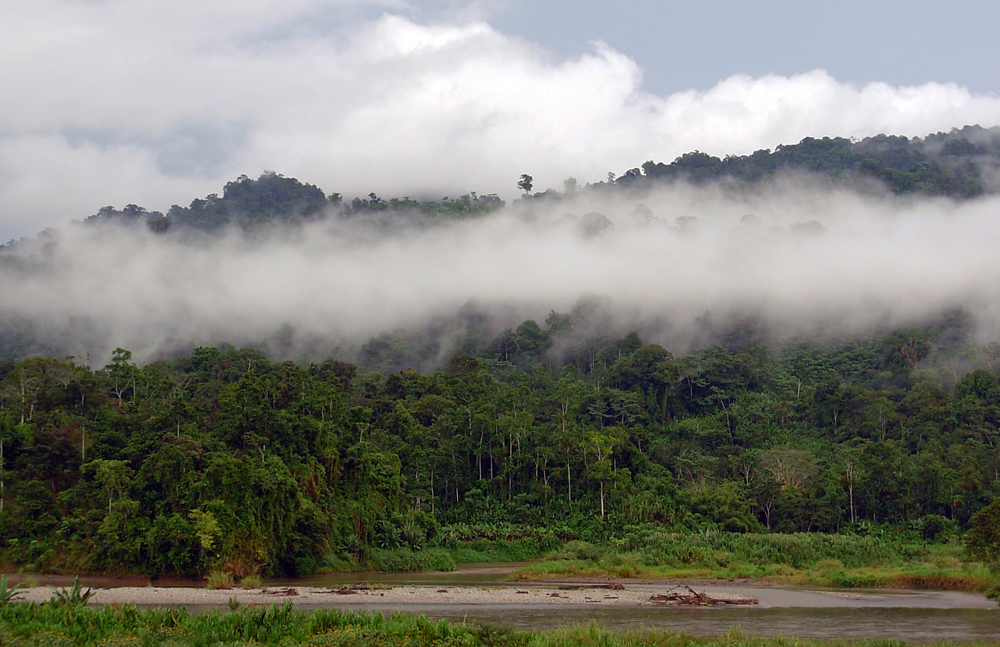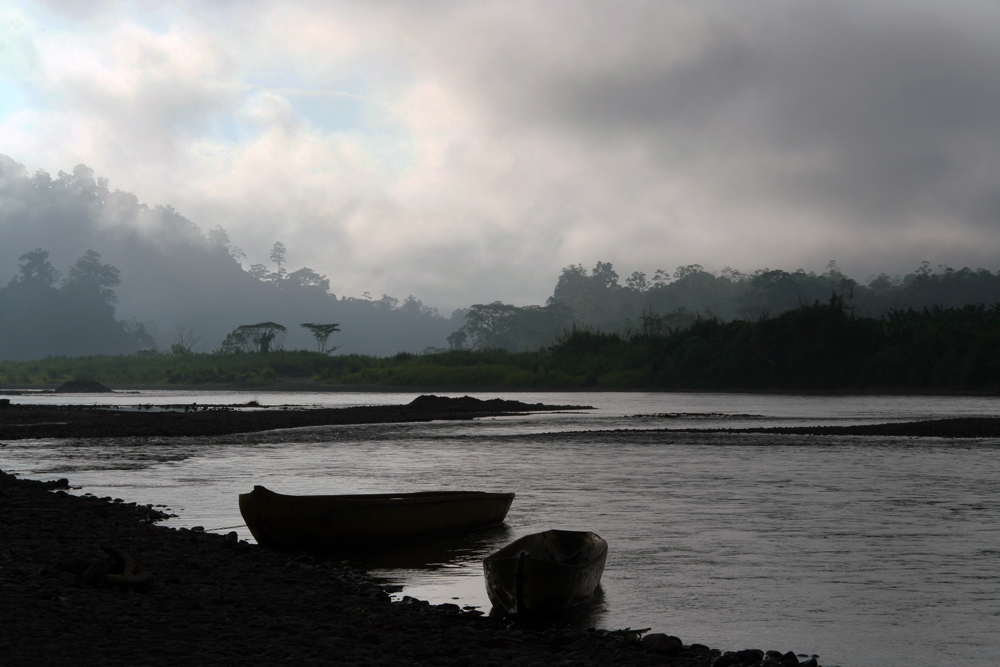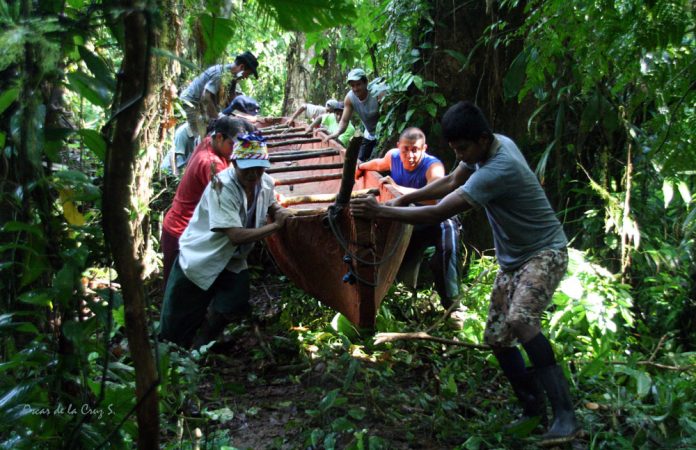
Trade and transportation keep the economy running. In the remote Costa Rican region of Talamanca, means of transport are essential items.
The Bribri indigenous people, an ethnic group that lives in southern Costa Rica and northern Panama, have ancestral customs for the manufacture and use of river transportation, little known to the inhabitants of urban areas.
Two wide rivers, the Yorkin, which begins in Panama, and the Telire, which begins in Costa Rica, join to form the Sixaola, which marks the border between the two countries. These rivers are important routes for transportation and communication, with navigation carried out in different types of boats.
Many years ago, canoes were manufactured locally: very narrow rowing boats, usually in one piece, without a keel, and with no difference in shape between bow and stern. This custom has been changing. Now, to navigate small rivers, people use low flow or narrow, used wooden or fiberglass boats or aluminum pangas.
In Talamanca, however, canoes continue to be manufactured and used as a means of transporting people and merchandise.
For activities such as crossing a river, canoes are essential. First, a canoe is moved upstream along the bank using a long wooden rod pressed against the river bottom; thanks to the skill of the canoeist and the force of the water, this maneuver allows the current to take the canoe downstream towards the opposite shore. The worker charges a modest sum for this service, which is of great importance to the community.
En los ríos más anchos las canoas utilizan motor fuera de borda para cruzar. No es extraño ver pasar por el Telire, el Sixaola o el Yorkin una canoa llena de banano, dando la impresión que el agua la va a anegar. Este medio es importante para sacar la producción de los agricultores quienes de otra manera perderían la cosecha.
[modula id=”6093″]
The Bribri art of making and mobilizing a canoe
To make canoes, Bribris look for a tree that meets their requirements for quality, height, width, and type. Not all woods are good for canoes. Bitter cedar is highly sought after since it is not the heaviest and is highly resistant. Mahagony is abundant and strong, but weighs more.
The tree to be used is not necessarily close at hand. In some cases it is in the jungle, in hilly terrain kilometers from the river. The canoe is made in the jungle and then taken to the shore.
The decision is made to remove the canoe when it is in the final stage of manufacture. The presentation is rustic and must be refined after it is taken out of the jungle. Depending on the size of the tree, a long and a short canoe can be made from the same trunk.
To get to the river with the new canoes, community members must make a trail in the jungle and push the canoes for several hours with the help of friends and neighbors: it is communal work. Everyone collaborates voluntarily.
Pushing the long canoe, they work as a team of 20 to 24 people, 10 or 12 per side. A long, strong rope is tied to the front, which is attached to nearby trees to avoid accidents. The person in charge of pulling the rope, once the canoe is secured, lets out a loud cry that tells the others to push. Again he tightens the rope and shouts; everyone pushes at the same time; again he secures the canoe, gives a loud cry, everyone pushes. This is repeated several times until they reach the top of the trail. When the sections are flat or only slightly inclined, the ropes are not used.
On the descents, they change the position of the rope to the back, preventing the heavy canoe from gaining momentum and hitting the participants.
Progress is slow. It requires tenacity and perseverance. Some trails are narrow, which makes the work even more difficult.
When everyone is almost on the verge of fainting, the person in charge of hydrating the group arrives. They stop for a moment and begin a time of fun and relaxation.
The usual drink is chicha, which they share with joy, drinking from a single guacal that they pass between them until it is finished. Amidst lots of laughter, it’s refilled and passed once more until it is empty again. After a few minutes, work resumes.
[modula id=”6094″]
Once at the river, workers must contend with stones and logs. In some places, we must take the canoe out of the water to skirt a waterfall. In others, it gets stuck between the stones, the pressure of the water is intense, and the men struggle tirelessly to tear her from the arms of the river. On some occasions the canoe is tilted and the water manages to rise, like a passenger who did not pay for a ticket, considerably increasing the weight. The men must make an effort to remove it, but the river does not want it to go away. It holds the canoe tightly and does not want to give it up.
Again, the men must use the rope to secure the canoe. They are not willing to lose it. It is a struggle between the river and the men, back and forth, pushing and pulling. The men converse in low voices so that the river cannot hear them, to deceive the river and make it believe it has won. They tilt the boat to drain the water, loosen the rope, push hard. They use rods as levers that they’ve cut in the jungle.
Finally, the canoe begins to give way. Little by little, they push it onwards. The leader yells “Give it more! It’s moving!” Little by little, it continues downstream.
It takes more than 30 minutes to get the canoe to float freely. Everyone is exhausted, but there are a few meters to go to reach the calm waters. A cry comes from deep in the guide’s throat: push, push.
At last they can rest again, and the chicha circulates anew. The silence of the jungle is changed by laughter; the murmur of the river is hardly heard; between jokes, everyone shares the triumph: the worst of the rapids have been overcome. Everyone knows that the hardest part is over.
This long-haul effort is exhausting and dangerous. There are no medical centers nearby, if one of the assistants were to be crushed by the weight of the canoe, he could die or be improperly treated. It would take many hours to spread the word about the accident. In these cases, the best alternative would be to put the injured person to bed in the canoe and, with all the risks involved – going through rapids, small waterfalls, calm waters, eddies and God knows what else – finally leaving the injured person in a safe place.
This activity is a unique experience, full of joy and color, shared with cheerful and hardworking people who make a massive effort to help a friend to obtain a canoe.
Upon reaching the point where the river is navigable, a new member of the community has been born, a new means of transport. The canoe awaits several years of work: moving people, food, work tools, new settlers, tourists. Progress for the region has received another boost.




